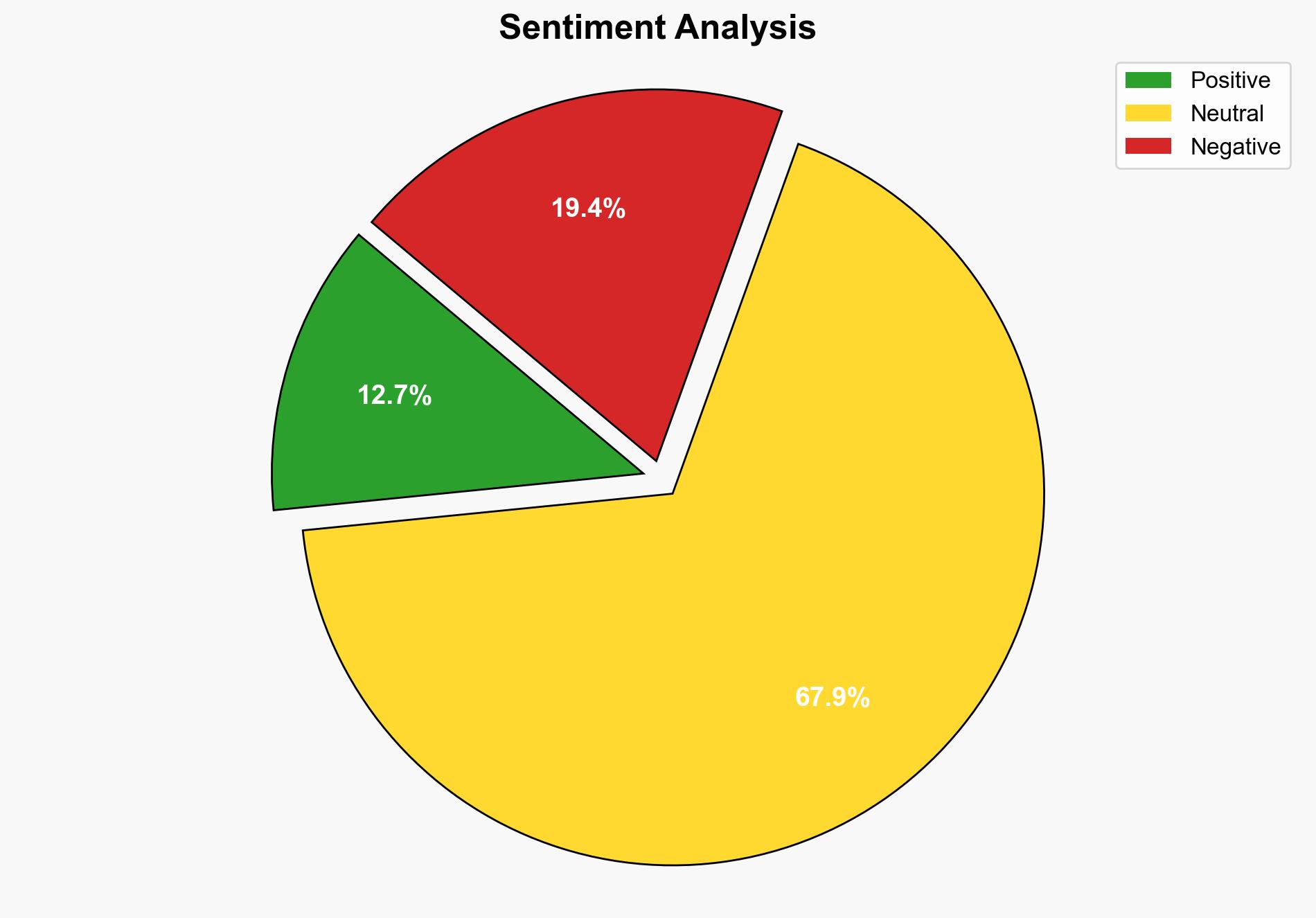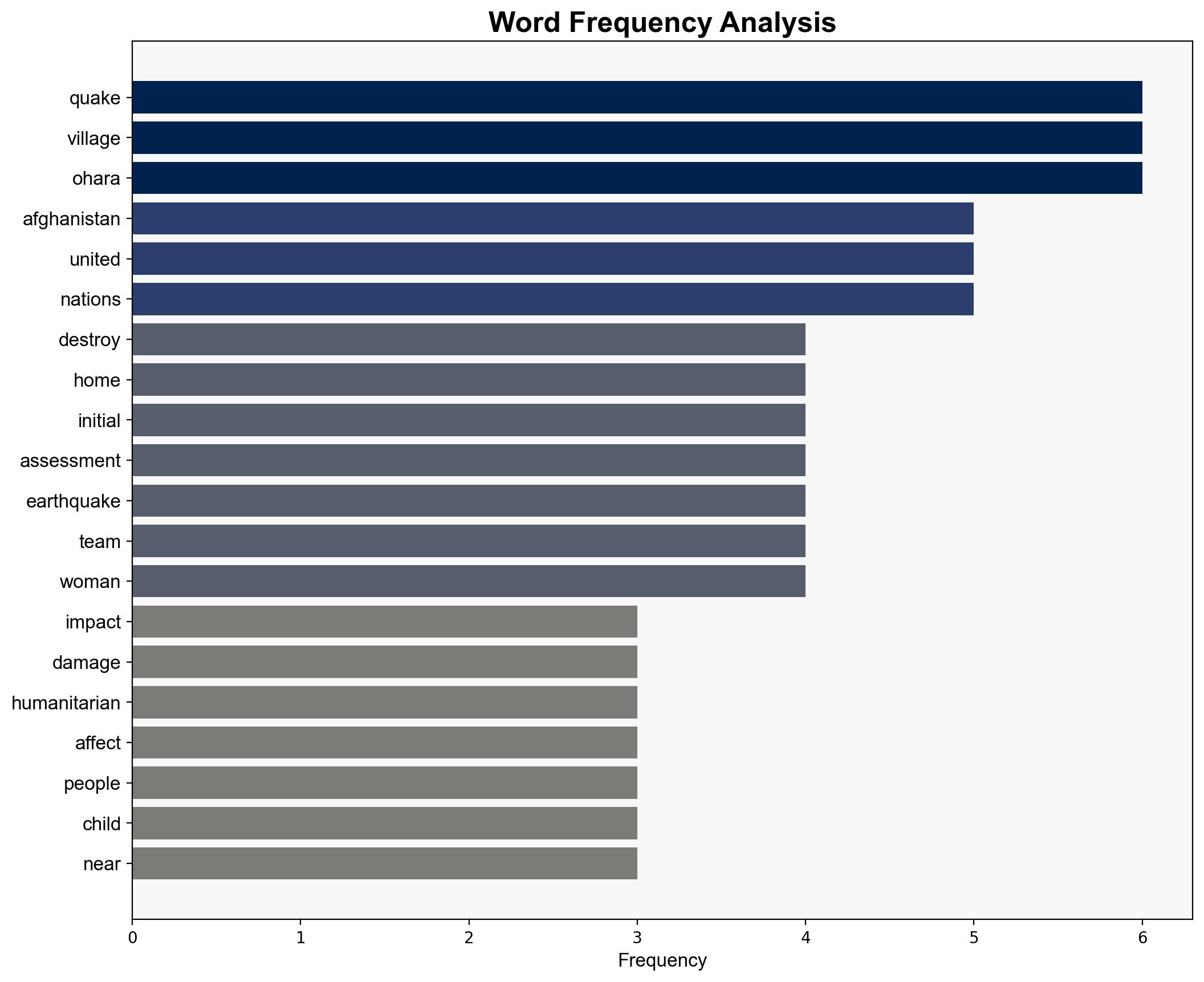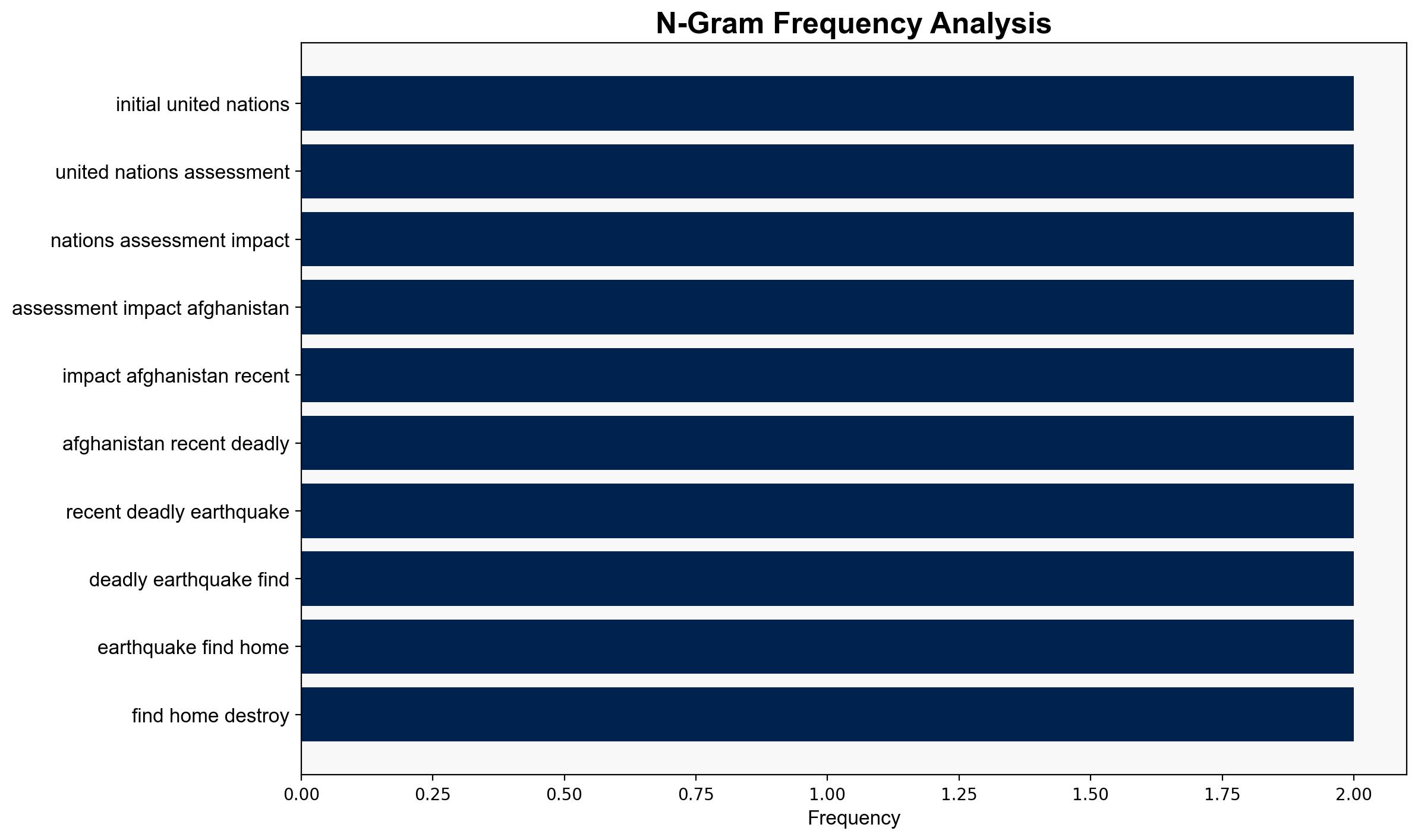Afghanistan quake destroyed 5230 homes in 49 villages but the UN hasn’t gotten to 362 others – ABC News
Published on: 2025-09-09
Intelligence Report: Afghanistan quake destroyed 5230 homes in 49 villages but the UN hasn’t gotten to 362 others – ABC News
1. BLUF (Bottom Line Up Front)
The most supported hypothesis is that logistical challenges and security issues are significantly hindering the United Nations’ ability to assess and respond to the earthquake’s impact in Afghanistan. Confidence level: Moderate. Recommended action: Enhance coordination with local entities and secure additional resources to overcome access barriers.
2. Competing Hypotheses
1. **Logistical and Security Barriers Hypothesis**: The UN’s inability to reach 362 villages is primarily due to logistical challenges such as damaged infrastructure and security issues in Taliban-controlled areas.
2. **Resource and Coordination Deficiency Hypothesis**: The delay in reaching affected villages is due to inadequate resources and poor coordination among international and local agencies.
3. Key Assumptions and Red Flags
– **Assumptions**: It is assumed that the UN has the necessary intent and resources to reach all affected areas but is hindered by external factors. It is also assumed that the Taliban’s control does not actively obstruct humanitarian efforts.
– **Red Flags**: The potential underreporting of affected areas and the lack of detailed information on Taliban cooperation could skew assessments. The absence of clear data on the UN’s logistical capabilities raises questions about operational readiness.
4. Implications and Strategic Risks
The inability to access affected areas could exacerbate humanitarian crises, leading to increased mortality and morbidity rates. This situation may also strain regional stability, potentially escalating into broader geopolitical tensions if international aid is perceived as ineffective. The risk of disease outbreaks, such as cholera, could further destabilize the region.
5. Recommendations and Outlook
- Enhance collaboration with local authorities and NGOs to improve access to remote areas.
- Secure additional funding and resources to address logistical challenges.
- Scenario Projections:
- Best Case: Improved coordination leads to timely aid delivery, mitigating humanitarian impacts.
- Worst Case: Continued inaccessibility results in severe humanitarian crises and regional instability.
- Most Likely: Gradual improvement in access as logistical solutions are implemented, but with ongoing challenges.
6. Key Individuals and Entities
Shannon O’Hara, United Nations, Taliban authorities.
7. Thematic Tags
national security threats, humanitarian crisis, regional focus, disaster response





